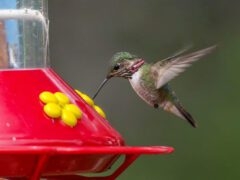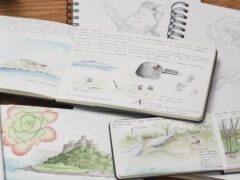Identification
Powered by Merlin
Small thrush-like bird with distinctive black-and-white tail pattern best seen in flight. Throughout most of range, breeding male is overall pale with gray back and buffy throat, black mask, and black wings. Breeding female is duller without black mask. Nonbreeding and immature birds are bright buffy overall with subtle pale eyebrow and lack contrasting black wings. Note long legs and upright posture. Tends to stay on the ground or on low perches. Primarily Eurasian species with a limited breeding range in Alaska; breeds in areas of bare rock and short grass and spends the non-breeding season in open habitats such as grasslands and barren rocky plains. Jumbled-sounding song is quite variable, often including whistles, trills, and mimicry. Calls include a high-pitched “weet”, dry rattle, and dry “chak”, often repeated.
Relative Size
About the same size as a Lapland Longspur.


Measurements
- Both Sexes
- Length: 5.7-6.1 in (14.5-15.5 cm)
- Weight: 0.6-1.2 oz (18-33 g)
Regional Differences
Ornithologists recognize two Northern Wheatear subspecies groups: a “Greenland” group that breeds in northeastern Canada, Greenland, Iceland, and the Faroe Islands; and a “Eurasian” group whose breeding range extends across most of Europe and northern Asia to Alaska and northwestern Canada. Birds in the “Greenland” group are larger than “Eurasian” birds, and in breeding plumage, “Greenland” adult males generally have richer and more extensively buff underparts, but identifying the two groups can be challenging.










